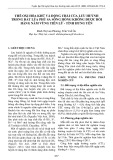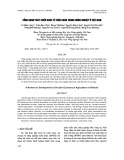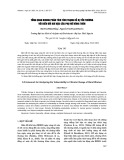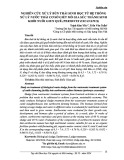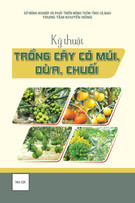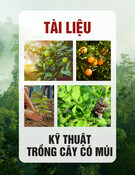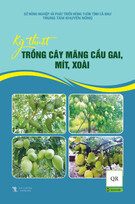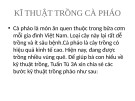
Vietnam Journal
of Agricultural
Sciences
ISSN 2588-1299
VJAS 2023; 6(3): 1492-1388
https://doi.org/10.31817/vjas.2023.6.3.06
1883
Vietnam Journal of Agricultural Sciences
Received: November 7, 2022
Accepted: August 23, 2023
Correspondence to
nttquynh@vnua.edu.vn
ORCID
Nguyen Thi Thu Quynh
https://orcid.org/0000-0002-5654-
6593
Coping Strategies of Households in Lao Cai
Province in Dealing with Risks in Tea
Cultivation
Nguyen Thi Thu Quynh
Faculty of Economics and Rural Development, Vietnam National University of
Agriculture, Hanoi 131000, Vietnam
Abstract
Tea farming households in Lung Vai commune, Muong Khuong
district have been facing different types of risks. This study aimed to
analyze their current risk-coping strategies, then to propose some
solutions for the future. A total of 90 farmers in 3 villages with
different production scales had been interviewed using semi-
constructed questionare of how they identified and measured risks
based on their observations and experience. The statistical
descriptions and comparisons results pointed out that most of them
were very proactive and flexibly applied different strategies and
measures to prevent and minimize losses. However, the differences
in the strategies chosen and the level of application among the
households depended largely on the household’s resource capacity as
well as the awareness of the household head. To promote the
sustainable development of tea production in this area, the
government and relevant actors in the local tea value chain should
work together in order to develop solutions to intervene and support
households to improve their capacity to apply risk-coping strategies
more effectively in the future.
Keywords
Tea cultivation, risk, coping strategy, farm households, Vietnam
Introduction
Tea (Camellia sinensis) has become a key crop, bringing a
prosperous and stable life for the people in many mountainous
regions in Vietnam and Muong Khuong district, Lao Cai province in
particular. In recent years, thanks to boldly changing the local
planting structure, new tea varieties are actively bringing high
productivity and high economic efficiency, helping to form a stable
production chain to allow many tea-growing households to gradually
escape poverty and get better enriched. By the end of 2021, Muong
Khuong had planted nearly 4,000 hectares of tea, of which nearly
3,000 hectares of tea was for business. Tea is the main commodity
crop in this district, which brought a gross output of more than 100







